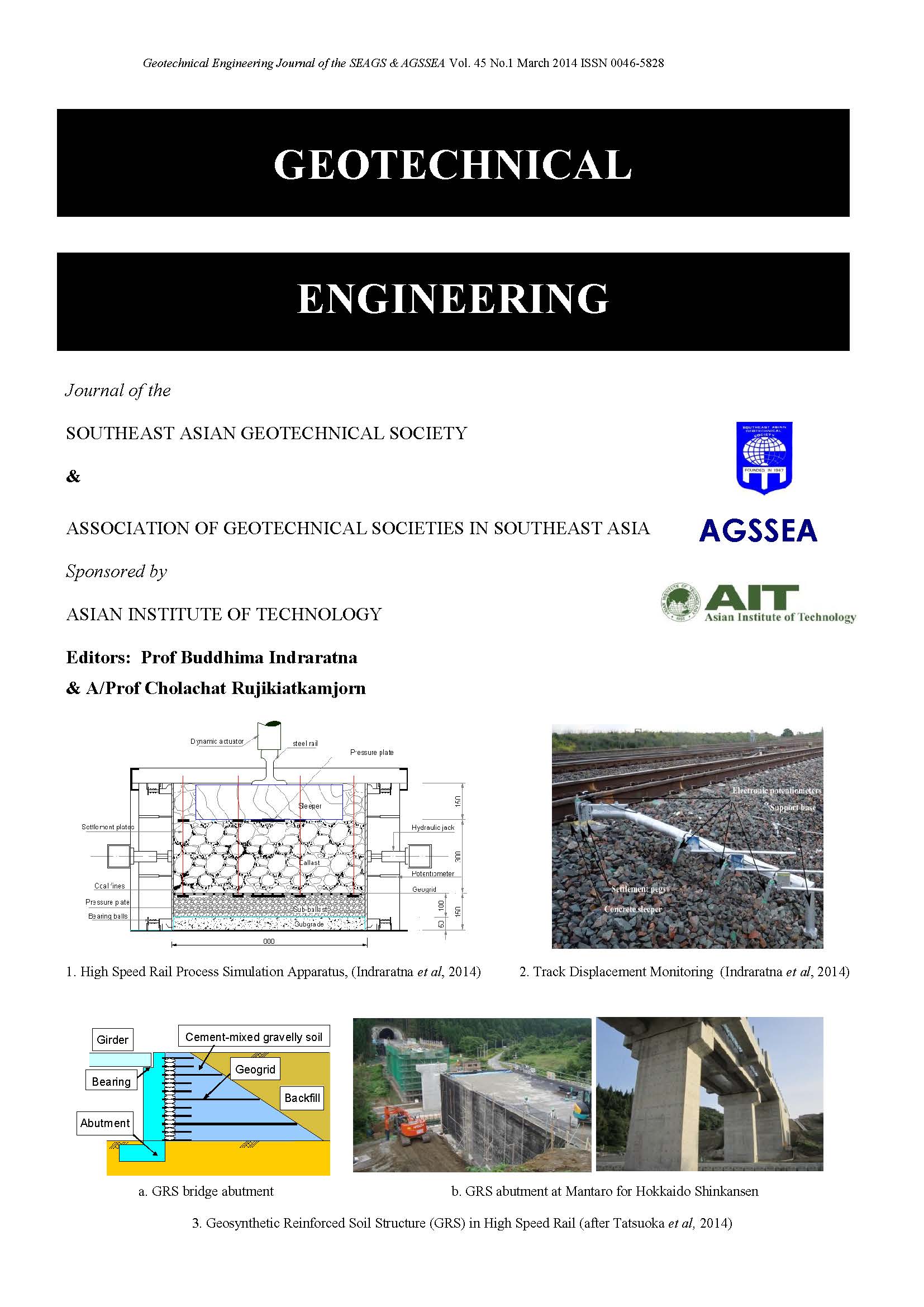Cement Stabilization for Pavement Material in Thailand
Main Article Content
Abstract
Highway pavement generally consists of base and sub-base, which are constructed from suitable materials. When no suitable materials are available and it is expensive to bring the materials from distant sources, an alternative way which is widely practiced in Thailand is to stabilize the in-situ soil by cement. This method is economical and the engineering properties of the soil-cement mixture can be controlled. The strength and resistance to deformation increase with time. Two types of pavement material, widely used in Thailand, are lightweight cemented clay and pavement recycled material. The effects of water content, cement content, air content and curing time on engineering properties (unit weight, strength and compressibility) of lightweight cemented clay are illustrated. The equations to assess the engineering properties are presented. The equations facilitate the determination of cement content and air foam content to attain the target strength, unit weight and compressibility characteristics using a few trial data. The statistical analysis result of the field strength development of the pavement recycled materials is presented. Mixing process in this technique plays a minor role on the field strength reduction. Curing condition is a major role controlling the field strength development. For engineering and economic viewpoints, the satisfactory curing water is required after pavement stabilization.
Article Details

This work is licensed under a Creative Commons Attribution-NonCommercial-NoDerivatives 4.0 International License.
Copyright © 2019 Association of Geotechnical Societies in Southeast Asia (AGSSEA) - Southeast Asian Geotechnical Society (SEAGS).


